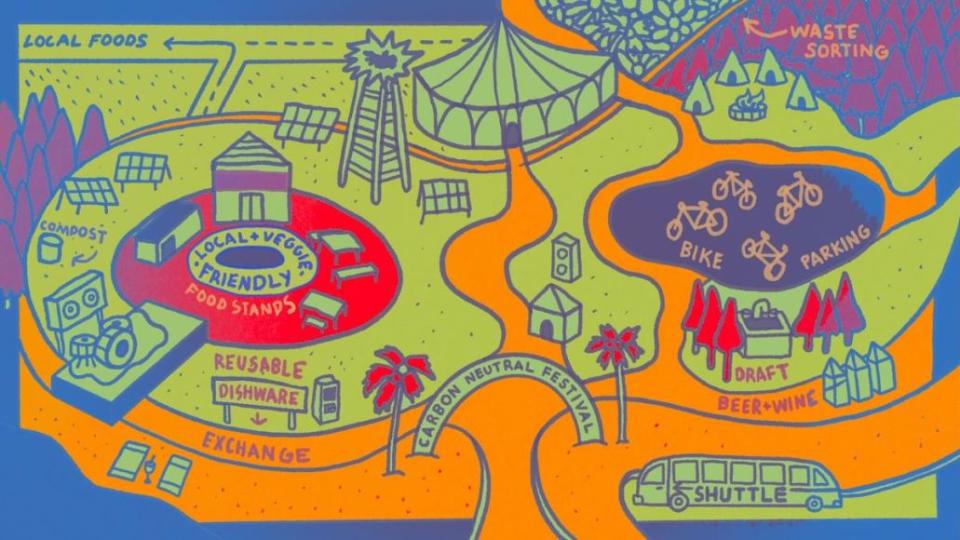At a Carbon Neutral Music Festival, We Gain More Than We Give Up
The post At a Carbon Neutral Music Festival, We Gain More Than We Give Up appeared first on Consequence.
Before you arrive at a music festival, you might spend hours in a long line of cars inching towards the bored parking attendants who organize lots so large they’re visible from low orbit. After walking through the long maze of vehicles, you’ll arrive at your first garbage receptacle, perhaps already piled high with plastic water bottles, each made with fossil fuels (about 8% of the world’s petrochemicals go to plastic), and most of which could have been recycled but won’t be. Recycling is expensive — just getting everything off the ground and bagged is hard enough — and so even more-sustainable aluminum cans are likely headed for the trash heap.
You might walk past food carts using propane to grill meat shipped in from across the country, past an art installation of twinkling lights shining bright just because, past corporate-sponsored charging stations that make sure you never have to pocket your phone. Between sets, you could buy a T-shirt that might not last two years before its first hole, churned out in a frenzy of fast fashion, part of a global industry responsible for nearly 10% of all greenhouse gas emissions.
Arrive early enough and you might be able to hear the constant growl of diesel power generators — unless it’s one of the fests connected to a municipal power grid, which 60% of the time in the US are powered by natural gas or coal. Once the shows start, you’ll hear the performances long before you reach the stages, as the massive speakers are designed not just for up-close audio quality, but to advertise the goings-on from across the grounds, obliterating silence. Visually, the festival is just as busy, and the headliners will likely be accompanied by enormous projection screens, as well as elaborate light sets, often blasting the stage even during daytime hours when the light show can’t even be properly seen.
Music festivals are not close to the biggest drivers of global climate change in a modern world built around cars, cheap clothes, shipped foods, and 24/7 connectivity. But most major festivals are an orgy of emissions, and from entrance to exit nearly every choice made favors short-term convenience over long-term sustainability. Today, a zero-emission festival is impossible. But with the help of motivated music fans, carbon neutral festivals are already becoming a reality. So what do they like look? What kind of tradeoffs should fans expect? And what do we get in return?
We spoke with a number of experts in the festival and environmental fields to help answer those questions. There are many possible approaches to carbon neutral music festivals, but they all consider a few key ideas.
Illustration by Steven Fiche
Carbon Neutral Means Offsets
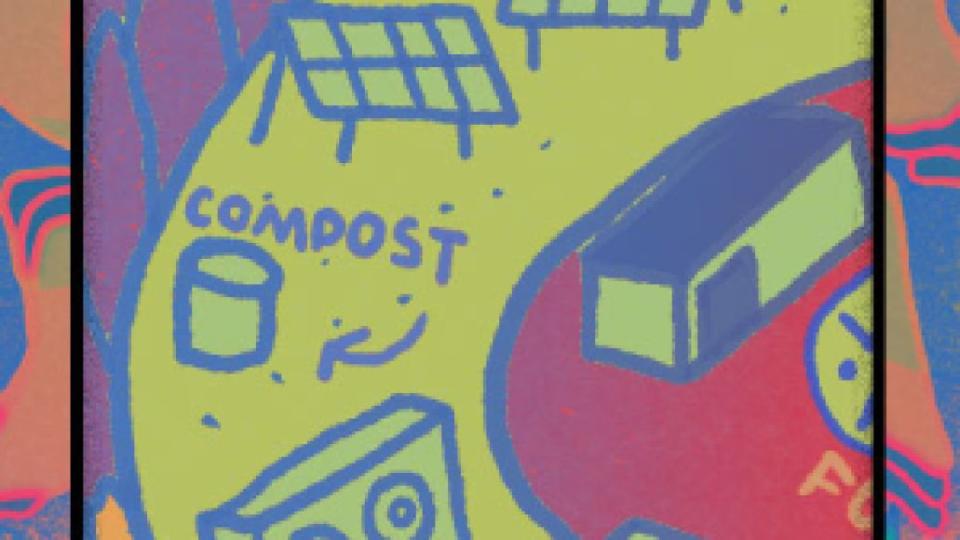
Carbon offsetting is the process of removing carbon dioxide and other greenhouse gasses from the atmosphere to make up for emissions elsewhere — like a music festival. It could be investments in renewable energy, safely destroying industrial pollutants, planting a forest as a carbon sink, or bottling methane from cow shit.
However, offsets rarely offer a one-for-one trade, a molecule emitted for a molecule captured. Calculating them requires balancing tradeoffs — present problems versus future gains, cow methane in Mexico against car exhaust in Los Angeles. Some large companies have even been accused of “greenwashing,” or using the promise of future offsets to avoid making meaningful changes now.
“Large-scale offsets are possible,” Chris Spinato of the entertainment and environmental nonprofit REVERB tells Consequence. “But they should only be used after significant steps have been taken to reduce emissions at their source.”
With reduction in mind, we asked our experts what possible setups for a carbon neutral festival might look like.
Location, Location, Location
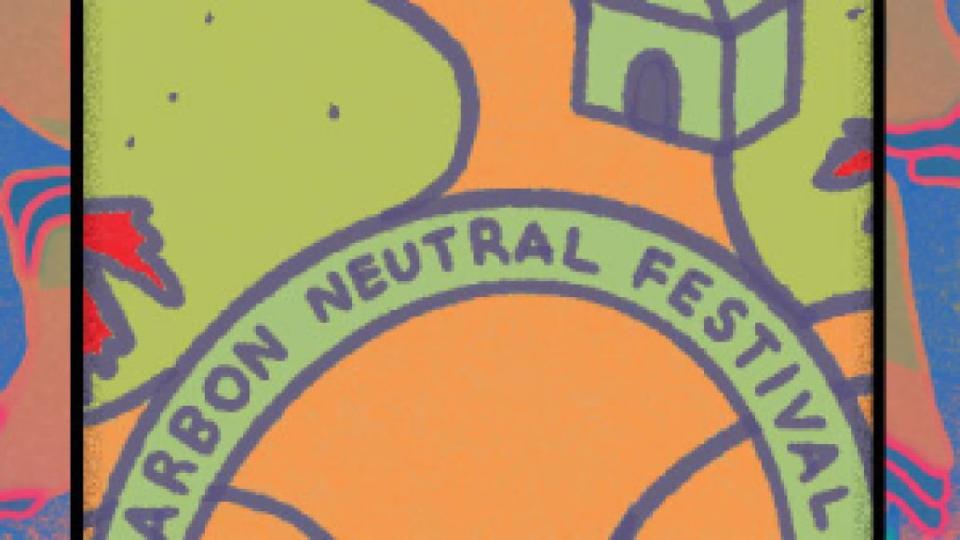
From the earliest stages of development, organizers make decisions that will determine the environmental efficacy of the festival, starting with its location.
While hosting a Fyre Fest-style retreat might sound appealing, it’s also a carbon nightmare. Requiring fans to drive or fly to a destination boosts emissions before the music even begins, which, to put it lightly, is not ideal. Such areas often also lack a robust public transit system, leading to an increased reliance on inefficient travel.
“The biggest source of emissions for live events including concerts, festivals, and sport events is travel,” Spinato says. “Travel alone can contribute 40–90% to an event’s carbon footprint.”
So, how do we get around this? First, a host city with a large and interested population. You’ve probably heard of the local food movement, and in coming years you’ll be hearing calls for live events with a more local focus. Unless, like Greta Thunberg, you are willing to sail for two weeks on a wind-, sun-, and-hydro-powered boat (the racing yacht wasn’t weighed down by a toilet or shower, allowing her to more quickly cross the Atlantic Ocean) globe-hopping comes with considerable environmental costs.
Public transit options could minimize the need for personal vehicles that lug only a few people into the fest at a time. As an added bonus, this will help you skip to the fun part much quicker, as you’ll no longer have to wait in a 10-mile-long line of cars, each filled with passengers who had nothing but time but somehow still weren’t prepared for their turn. With options like shuttle service to public transportation hubs, more festivals could do away with parking lots entirely.
How you power matters more than how much. The ideal festival should have access to a clean-energy municipal grid, but if that’s not possible, organizers should try just about anything before relying solely on diesel power generators.
Willie Nelson’s “Luck Reunion” recently swapped diesel generators for solar-powered intelligent battery systems, which REVERB estimates “reduced diesel consumption and related emissions by 93%.” Bonnaroo installed a permanent solar array before the 2013 festival. In a statement to Consequence, the fest said that in a full year, it provided energy “equal to about 20 percent of Bonnaroo’s total annual power needs.” Breakthroughs in battery technology would increase that number, but today much more energy can be renewably generated than stored or transported.
Rethinking Stages and Slots

Forget flat, some festivals are embracing curves. A slightly elevated hill with a solid patch of land beside it is a perfect spot for a stage. Using the natural grooves and hills from the earth allows for stages built using less material, rather than traditional structures which are erected 5 to 10 feet above the ground.
Oregon’s Pickathon Festival is committed to zero waste, and their stages are in natural gaps between the trees, with festival structures embedded into the preexisting landscape. “We weren’t putting up these massive structures,” founder Zale Schoenborn tells Consequence. “We were using what the land gave us. And we were able to reduce our footprint by half.”
Such efforts minimize the festival’s effect on the local environment and lowers the amount of energy needed to power a performance. Lighting, especially with a full rig of projectors, lasers, and spotlights, can suck up a lot of juice. Meanwhile, the biggest light source is shining above us every day, and stages can be planted like flowers in a place where they’ll get the most sunlight. For anyone who’s ever squinted through a sundown set, organizers can also remember our nearest star while planning out sightlines. With just a little forethought, audiences can be protected from staring into a blinding sunset in order to watch a show.
A particularly aggressive move would be rethinking festival hours. Music sounds just as good during the daytime as at night, and a festival that runs from 11:00 am to sundown could do away with lighting entirely.
Conscious Camping

Camping can help reduce electricity usage and transportation emissions from commuters. But far too often, campers exit the festival past trash bins piled high with tents, air mattresses, sleeping bags, tarps, coolers, and more — reusable products turned into single-use landfill.
“Try to borrow whatever you can instead of buying. If you must buy, see if you can get it used. Always opt for reusables over disposables. Treat your gear well while you’re at the festival,” REVERB recommends. “When it’s all over, if you’re not going to keep the products, take them with you and donate them to local charities or, if they’re irreparably damaged, dispose of them responsibly.”
Festivals can encourage good equipment practices, and they can also invest in campsites that make sustainable camping easier. Bonnaroo provides solar-powered charging stations which are serviced by personnel on electric bikes. A report from the US Geological Survey cited the need for “smooth, well-drained tent pads” — that is, designated camping areas — to make camping more comfortable, encourage responsible interaction with the natural space, and protect equipment from flooding. Permanent, water-saving toilet structures can lead to a cleaner, more comfortable user experience while making sure that waste is dealt with responsibly.
Food for Thought
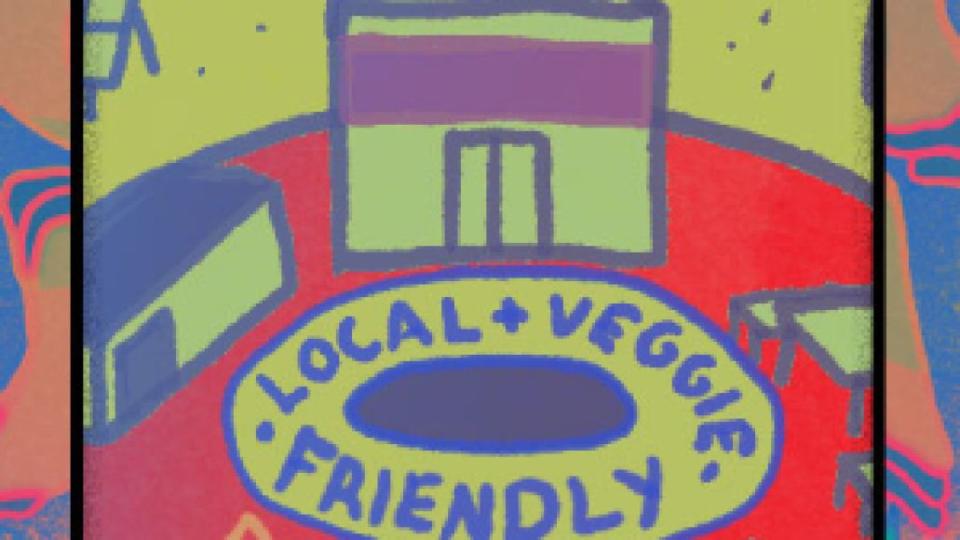
For anyone looking to decrease their carbon footprint, both at festivals and in everyday life, a great starting point is diet. Cutting out meat and other animal products is an eco-friendly choice for individuals and one of the most effective ways to decrease a personal carbon footprint. The UN’s Food and Agricultural Organization reports that about 14% of all emissions come from meat and dairy production. Removing yourself from this equation, or even just decreasing portion sizes, is a fantastic starting point.
At the festival of our dreams, picture yourself walking through a swath of local food vendors with fresh, tasty, veggie-forward options — burrito bowls, fresh fruits and vegetables pressed into smoothies and juices, taco stands, falafel, rice and noodle options, and refreshing salads. EuroScientist helps break down how encouraging festivals to utilize local vendors and business also helps to lower that overall carbon output — foods that are grown and sold locally travel a much shorter distance to reach the festival, which means that the carbon miles (aka a vehicle’s emissions) are far lower. This is a huge factor in the emissions equation and overall air pollution.
How the food is served matters, too. Pickathon relies on reusable dishware and cutlery made from a bamboo composite. Instead of being responsible for your own serving dishes, attendees purchase a token. “This token allows you to kind of eat all weekend — you basically buy yourself a dish, but you don’t have to carry it. You essentially can just carry the token,” Schoenborn says.
“When you go to a food vendor, you give them the token, they give you food in this kind of nine-inch bamboo composite [dish], and a bamboo utensil. And then you eat. And when you’re done, you give this to the dishwashing team and they give you back a token.” Once the bamboo wears down it is composted and reused. Switching to this system brought Pickathon “down to less than a third of the trash that we had generated before.”
Plentiful water refill stations are also a must, to stave off dehydration and the use of disposable bottles. As for alcohol, the eco-friendliest storage system are easy to pack, easy to reuse kegs. Rather than cracking open cans for consumption, draft beer is an excellent choice — as is draft wine.
What We Gain
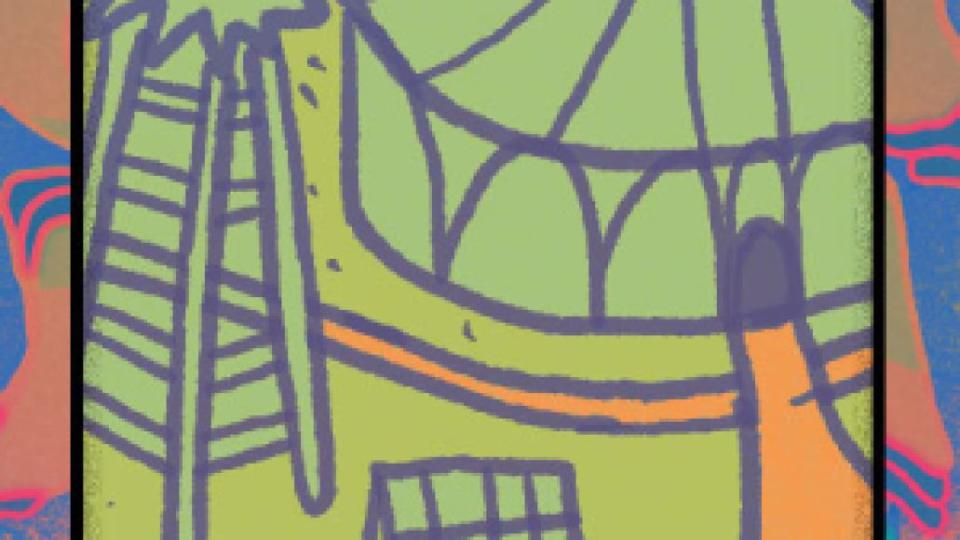
Before you arrive at a carbon neutral music festival, part of your ticket has been earmarked for a large-scale offset which, if done right, will leave the earth in a little better shape. The grounds might feel more open with fewer kiosks trying to sell you shit, and the air will be a little cleaner and a little quieter without fleets of diesel generators and cars.
“It’s so awesome to not wake up in the morning and see the entire festival grounds covered in trash,” Pickathon’s Schoenborn says. “Like, there’s no trash.”
With such changes, sure, a festival will be much closer to accomplishing the goal of reaching carbon-neutral status, but it also has the potential to foster a better overall experience. Exploring a festival site that respects the natural world it’s inhabiting is a hell of a lot more reassuring than hiking around and gawking at garbage piles, rushed construction, and an ocean of parked cars. As REVERB’S Spinato points out, it’s “not a matter of giving things up, but doing things better.” And with better practices comes a better fan experience.
At a Carbon Neutral Music Festival, We Gain More Than We Give Up
Wren Graves, Mary Siroky, Jonah Krueger and Paolo Ragusa
Popular Posts
